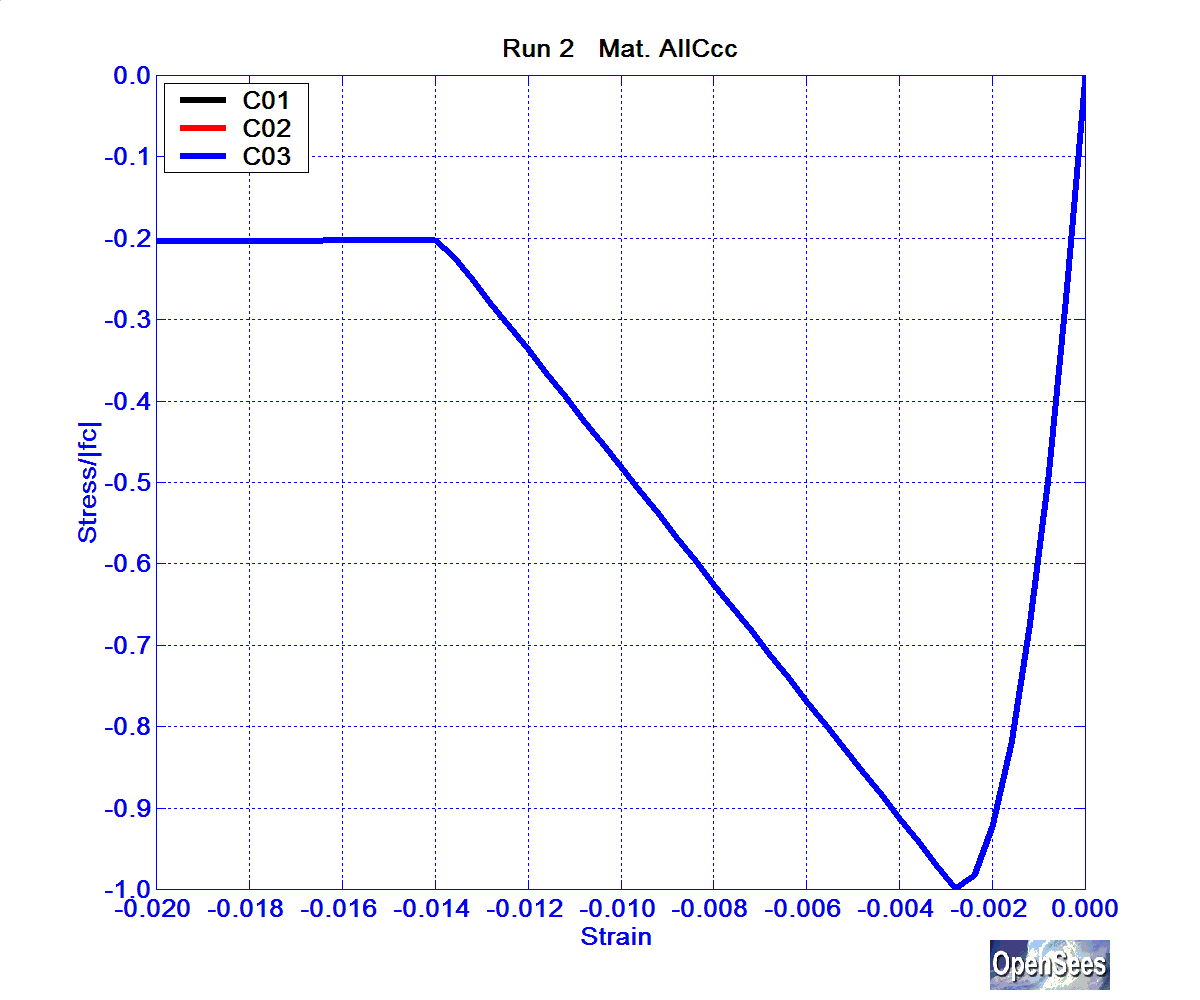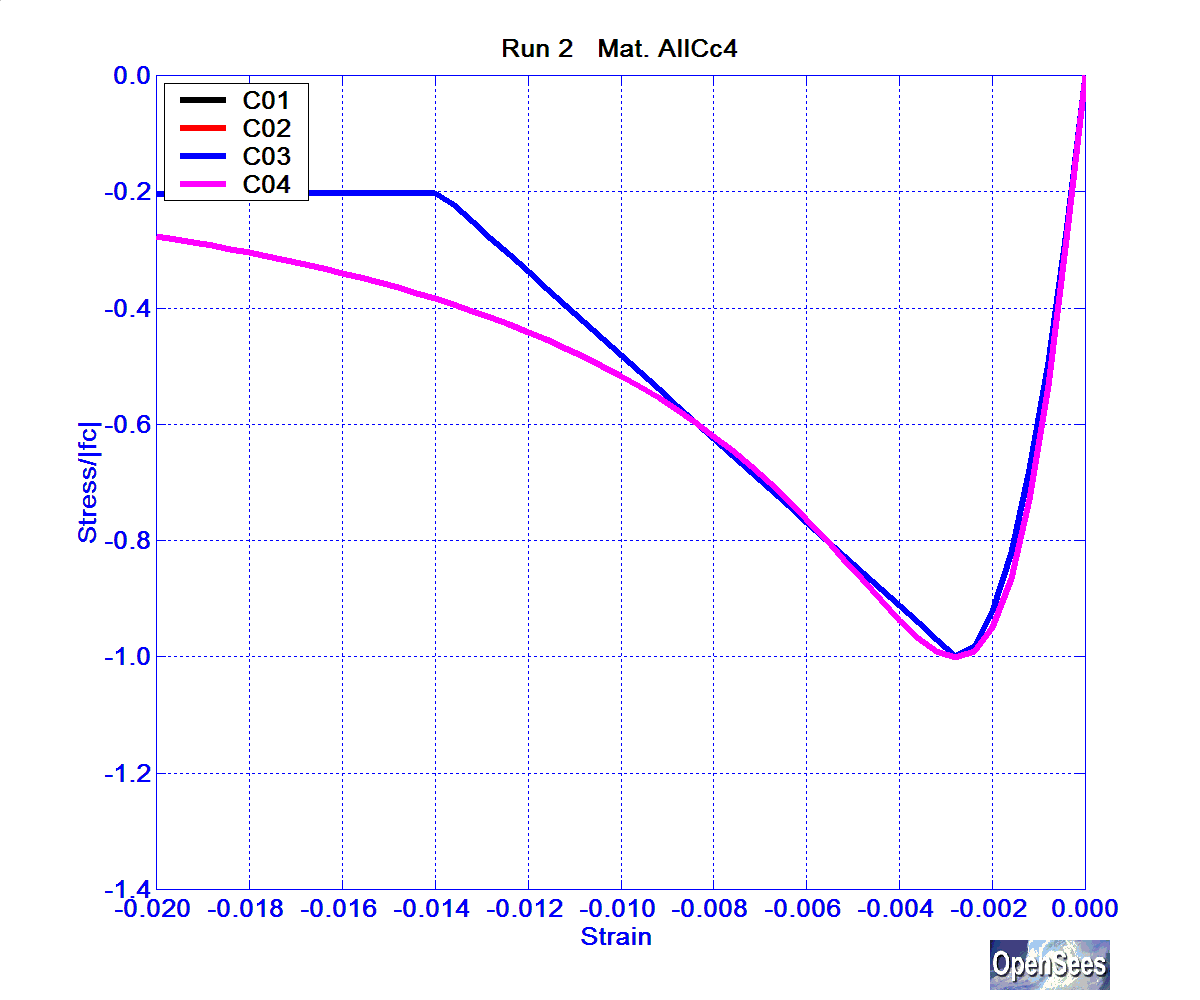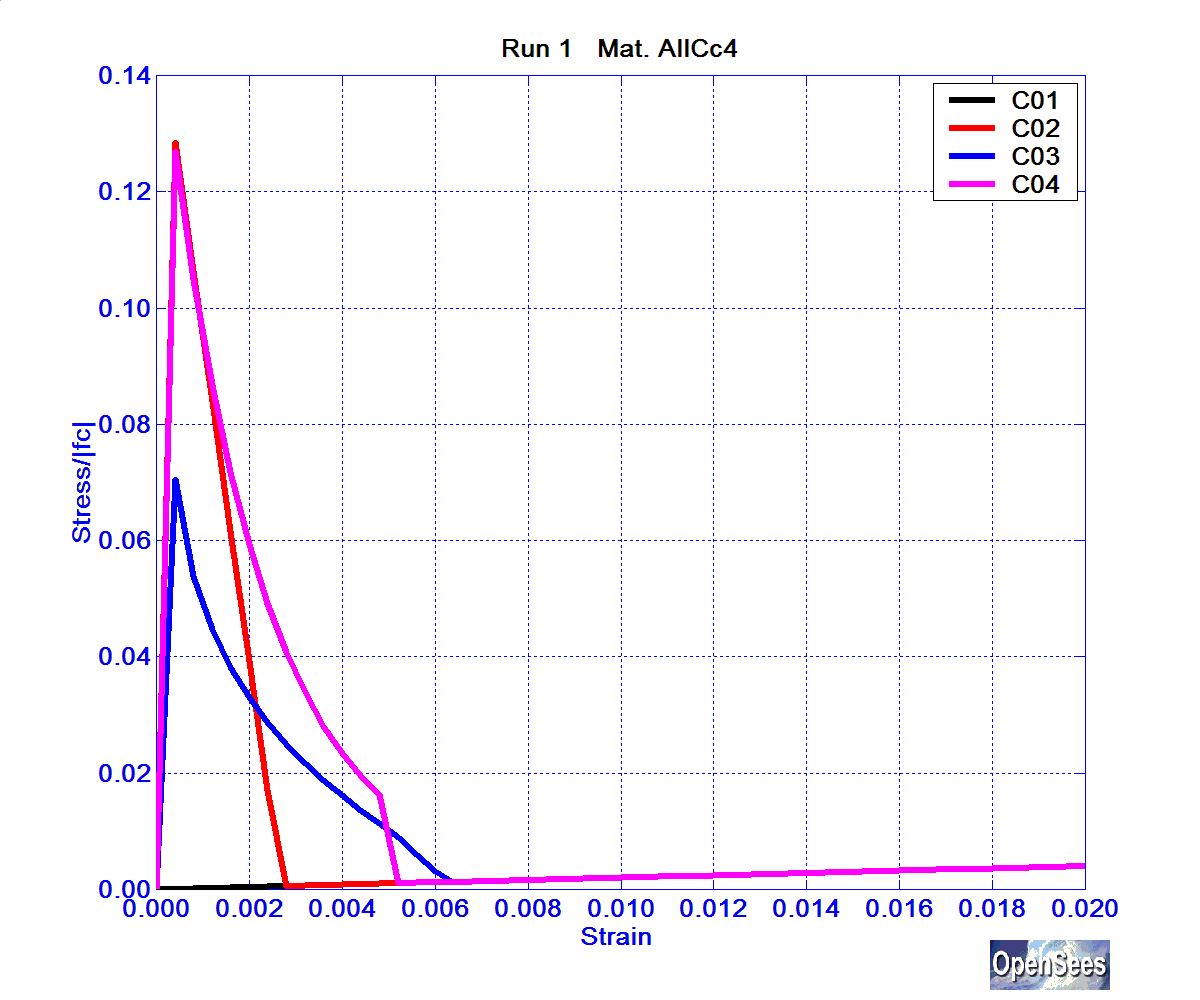The following uniaxialMaterial objects were compared: Concrete01, Concrete02, Concrete03 and Concrete04. The properties of each concrete material were selected to be representative of a realistic material and to all have similar backbone curves. The following are the input commands for each material type:
A full description of these arguments is found in the manual, under the uniaxialMaterial Command. While the compressive strength of all materials is the same, some other input parameters are different. The material properties were chosen to represent confined-concrete behavior, an approximation to that prescribed by the Mander model.
The following values were chosen in this study (+Tension, -Compression):
fc |
-4.0 ksi |
Nominal Concrete Compressive Strength |
Ec |
57*sqrt(|fc|) ksi =3605ksi |
Concrete Elastic Modulus |
fc1C |
1.25*$fc (= -5.0ksi) |
Confined-concrete maximum stress (mander model) |
eps1C |
2.*fc1C/Ec = -0.0028 |
strain at maximum stress |
eps1C04 |
3.*fc1C/Ec = -0.0042 |
strain at maximum stress (Concrete04) |
fc2C |
fc = -4.0ksi |
ultimate stress |
eps2C |
5*eps1C = - 0.0139 |
strain at ultimate stress |
eps2C04 |
20*eps1C = -0.0555 |
strain at ultimate stress (Concrete04, placed it far to maintain unloading slope low) |
ftC |
-0.14*fc1C = 0.7ksi |
tensile strength +tension |
Ets |
ftU/0.002 = 280ksi |
tension softening stiffness |
ft0C |
ftC/15 = 0.047ksi |
tensile stress at the transition from nonlinear to linear softening (Concrete03) |
epst0C |
2$ftC/$Ets =0.005 |
tensile strain at the transition from nonlinear to linear softening (Concrete03) |
epstuC |
1.25$epst0C (=0.00625) |
ultimate tensile strain (Concrete03) |
lambda |
0.1 |
ratio between unloading slope at $epscu and initial slope |
betaConcrete03 |
5 |
floating point value defining the exponential curve parameter to define the residual stress |
betaConcrete04 |
0.1 |
floating point value defining the exponential curve parameter to define the residual stress (as a factor of $ft) at $etu (0.1 value recommended by documentation) |
The backbone curve of each of these materials is shown in the following figures. Figure 1a shows the stress-strain in compression for Concrete01, Concrete02 and Concrete03 materials, to show that they all follow the same curve in compression. Figure 1b includes Concrete04, which has a different envelope from the other materials. Figure 2 shows the stress-strain curve for all four concrete materials, as they are all different.
Figure 1a. Backbone Curve for Concrete Stress-Strain Relationship, Compression -- Concrete01, Concrete02, Concrete03.

Figure 1b. Backbone Curve for Concrete Stress-Strain Relationship, Compression -- Concrete01, Concrete02, Concrete03, Concrete04.

Figure 2. Backbone Curve for Concrete Stress-Strain Relationship, Tension-- Concrete01, Concrete02, Concrete03, Concrete04.
